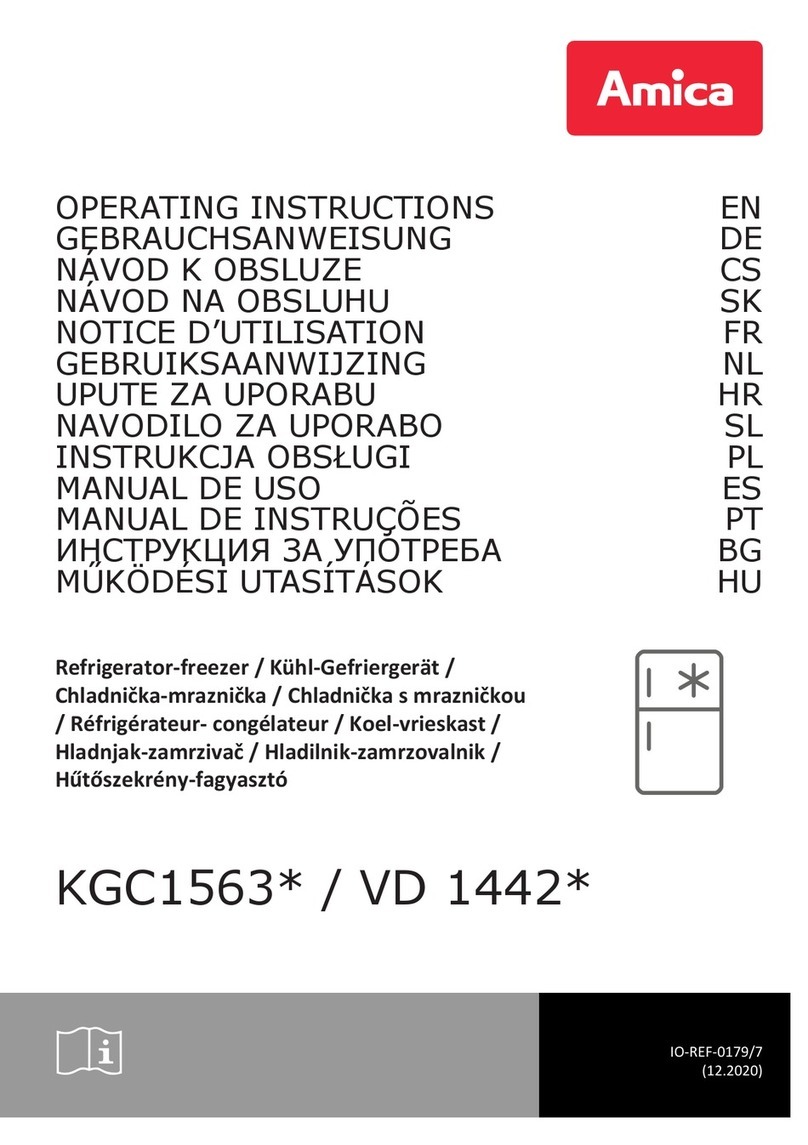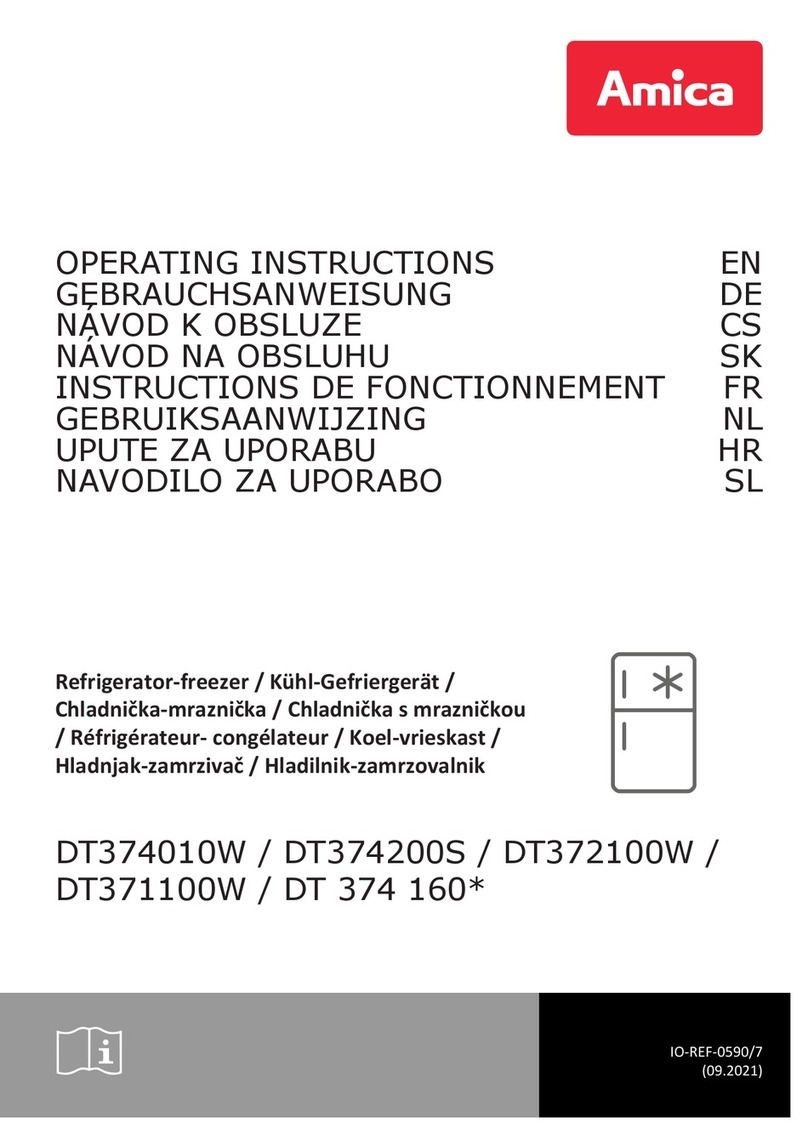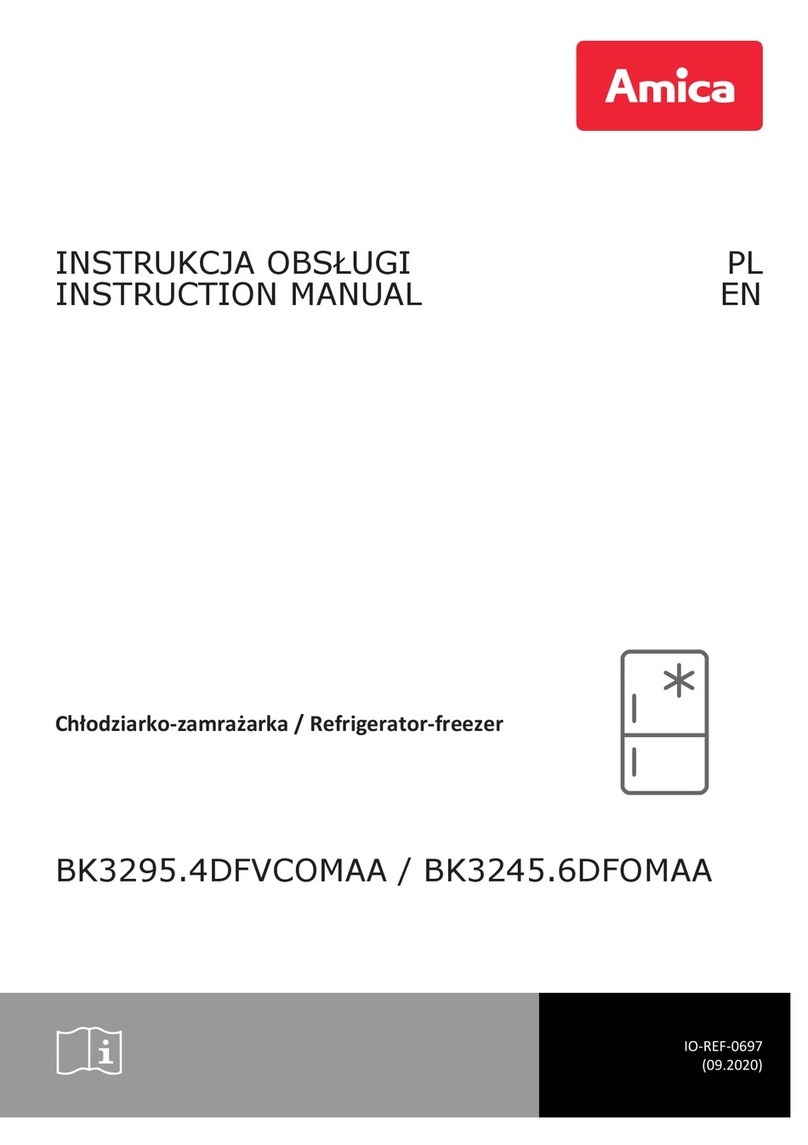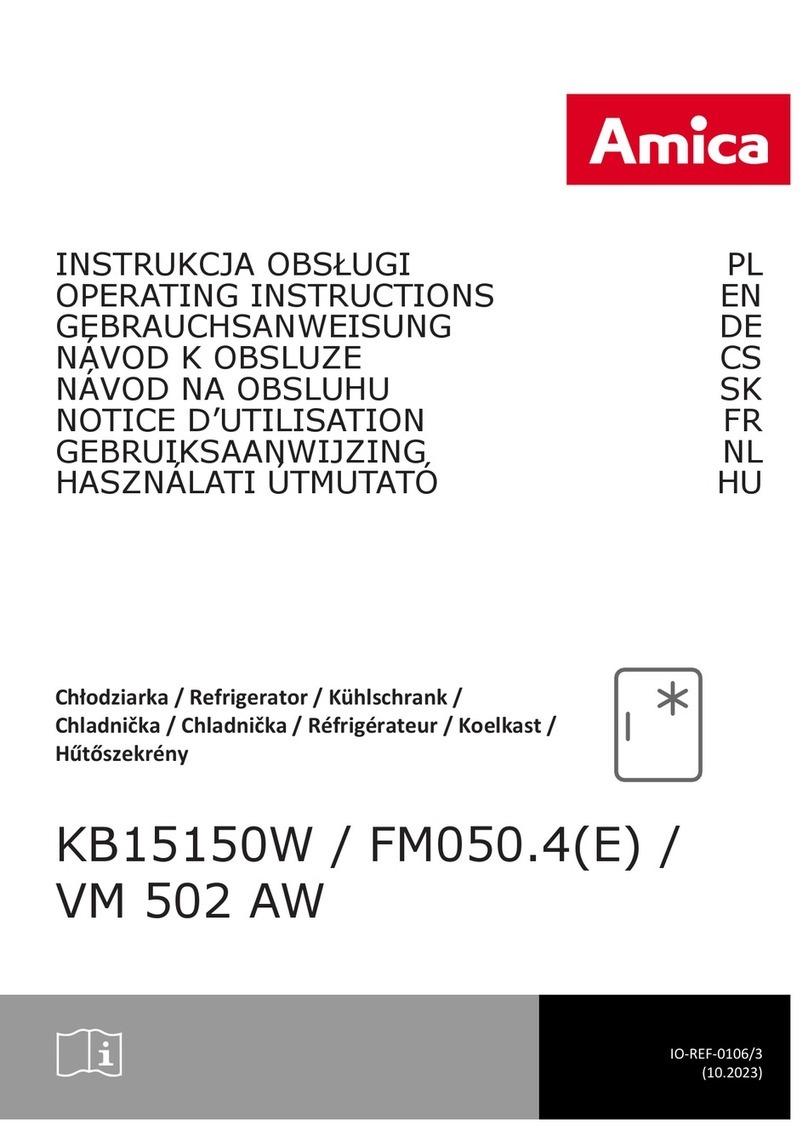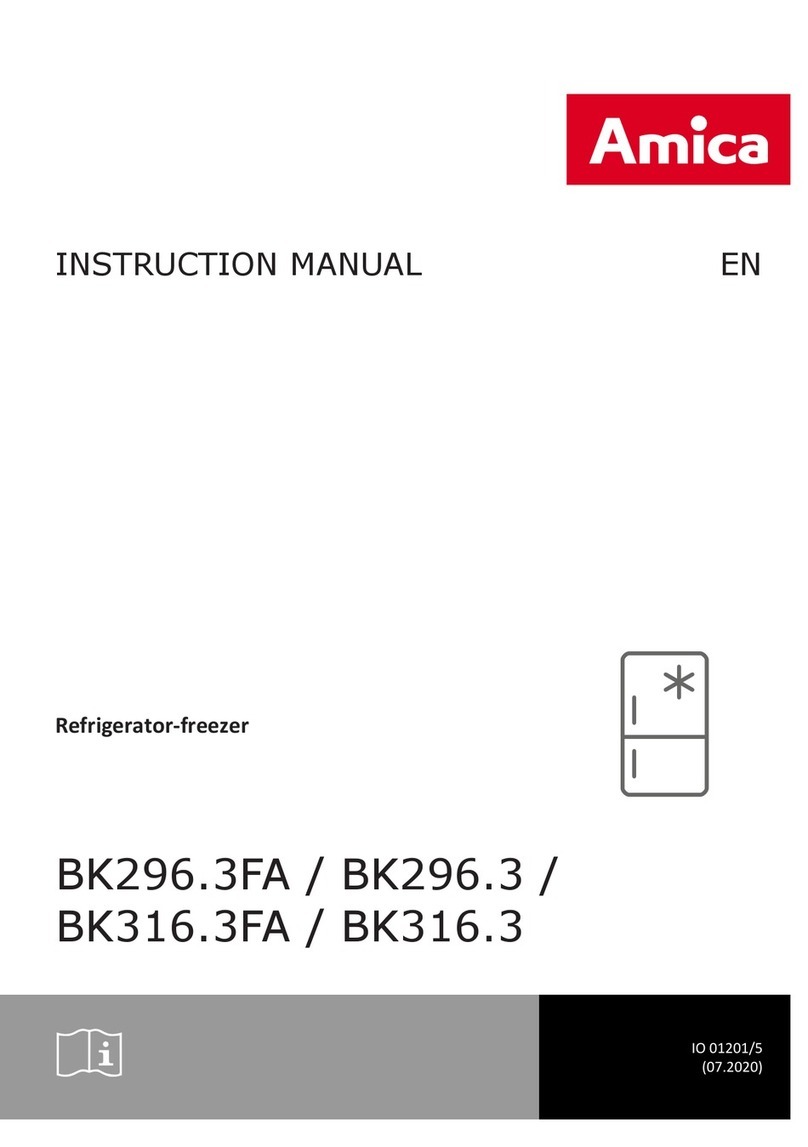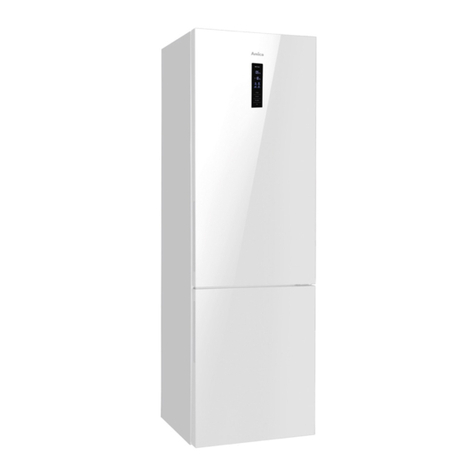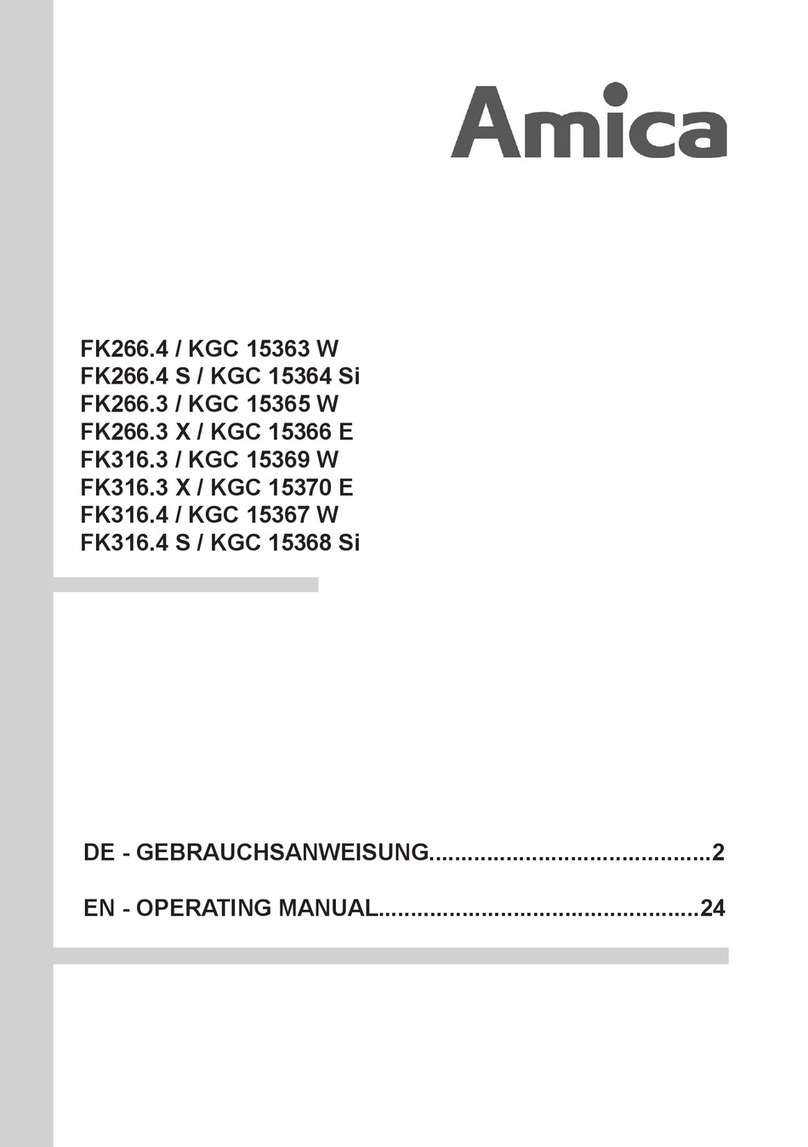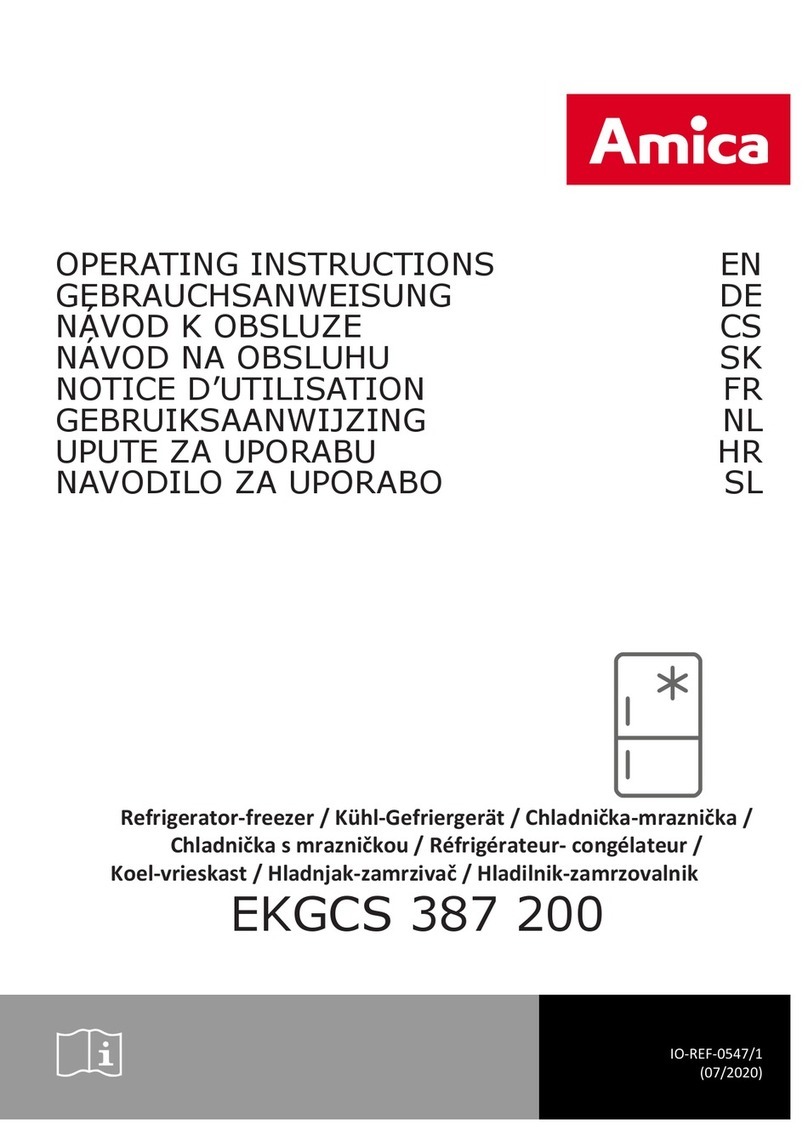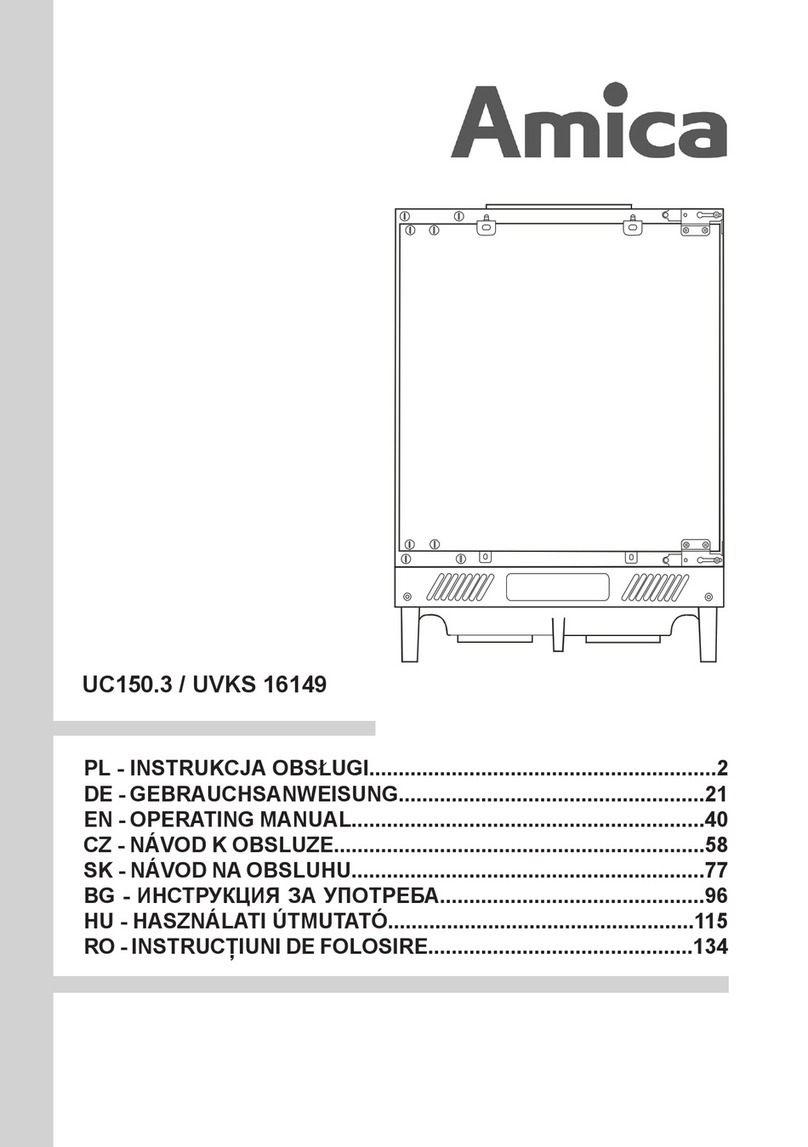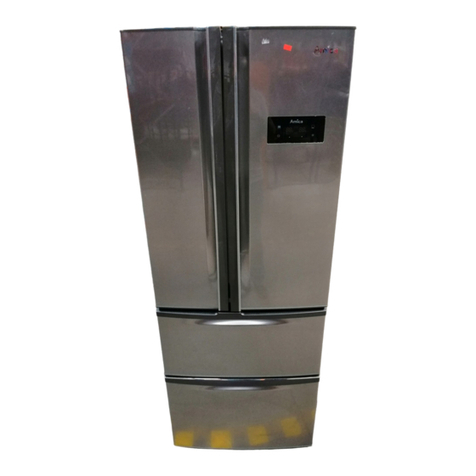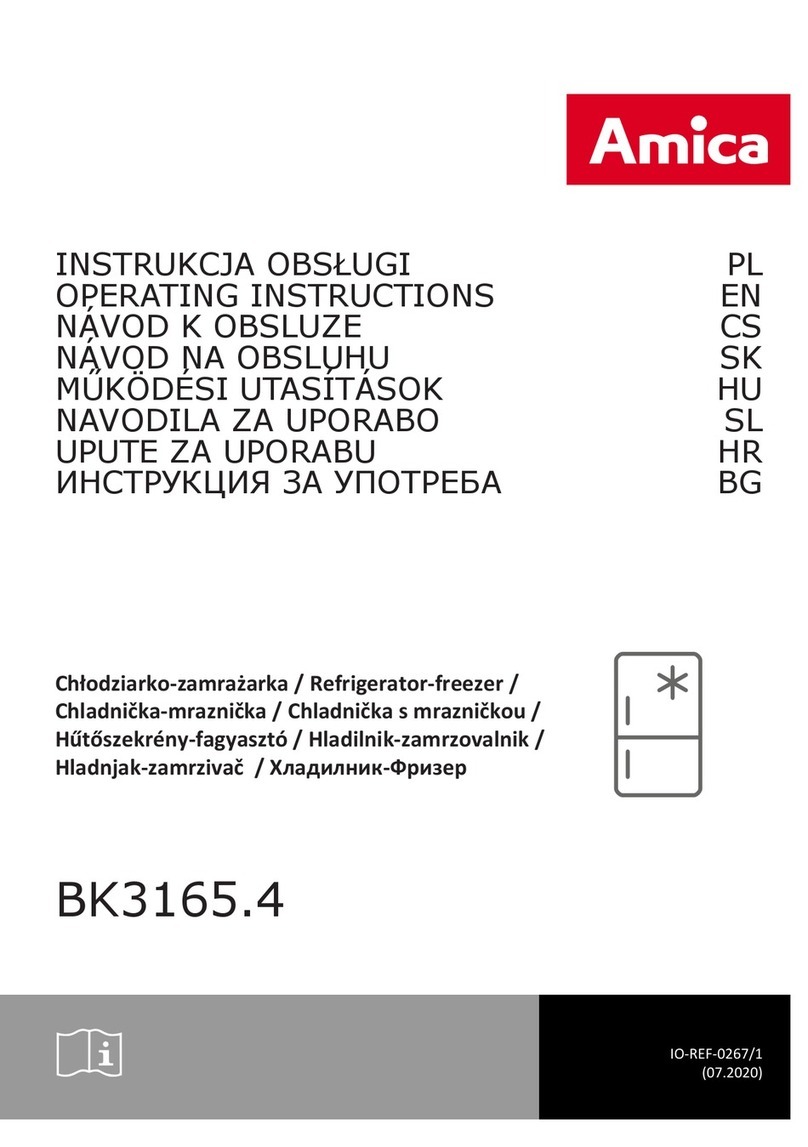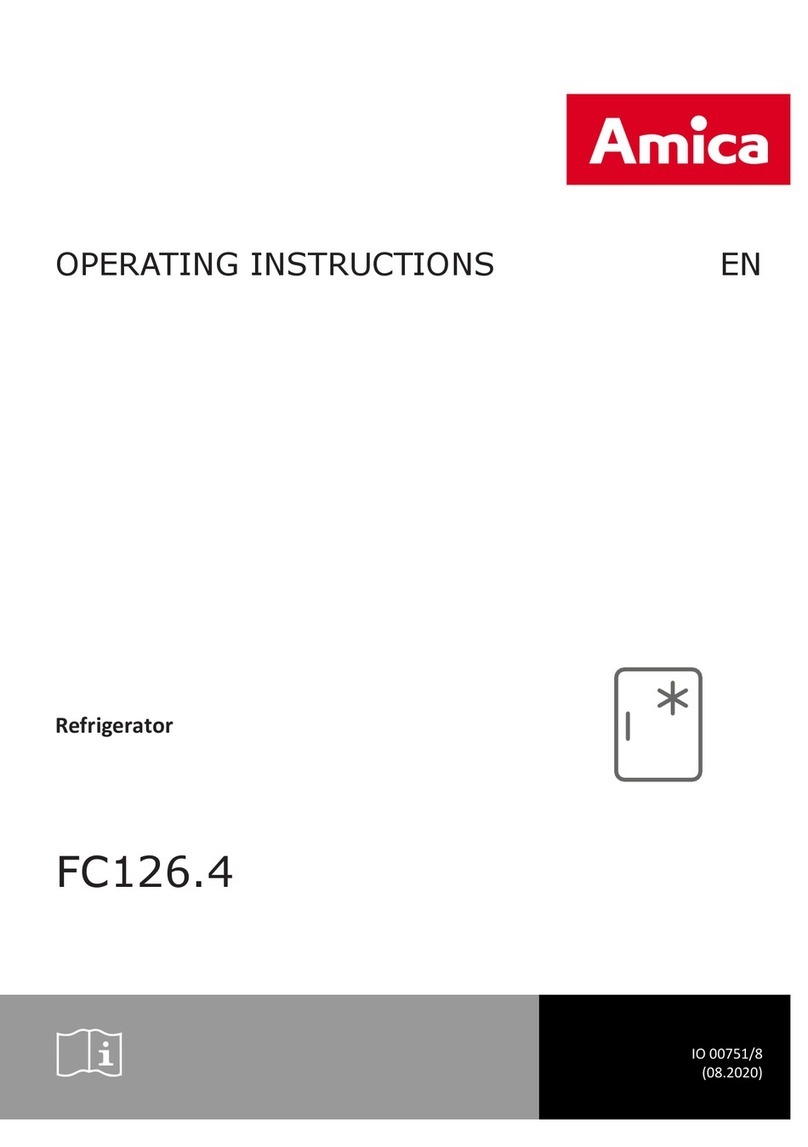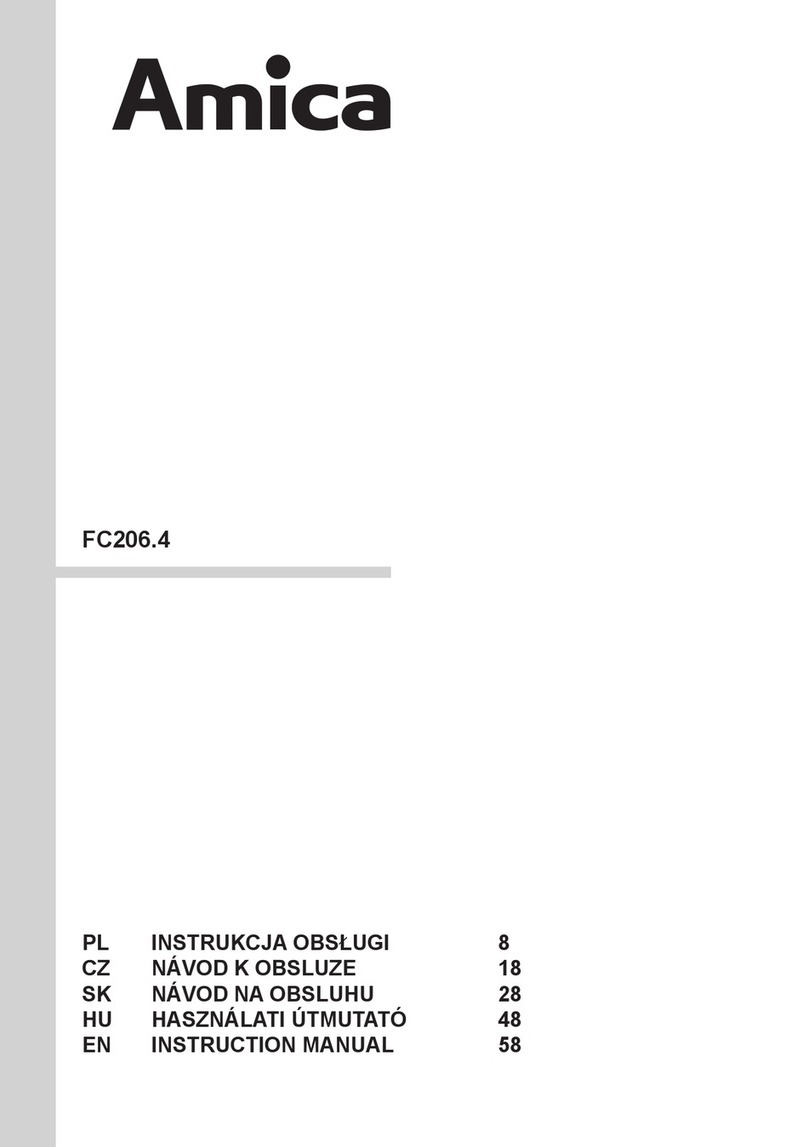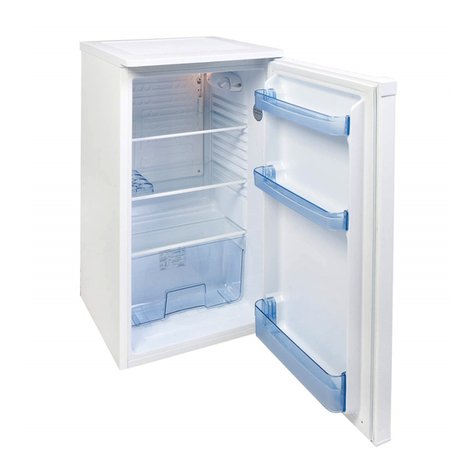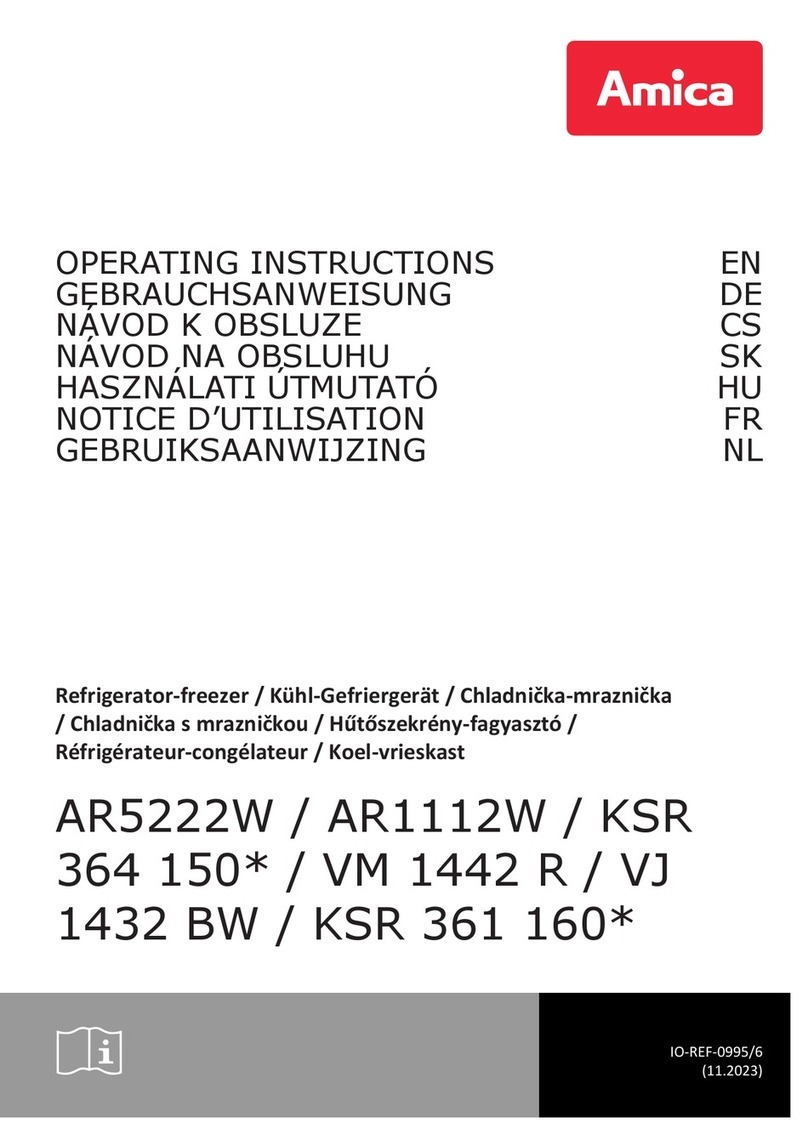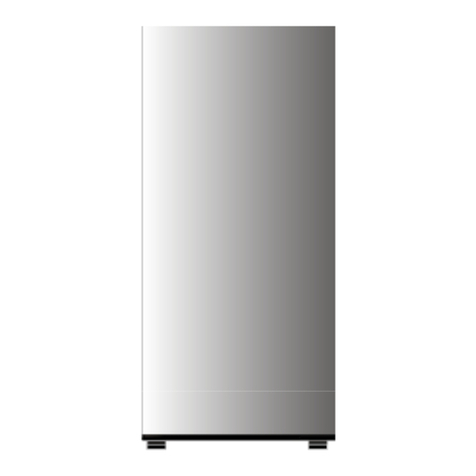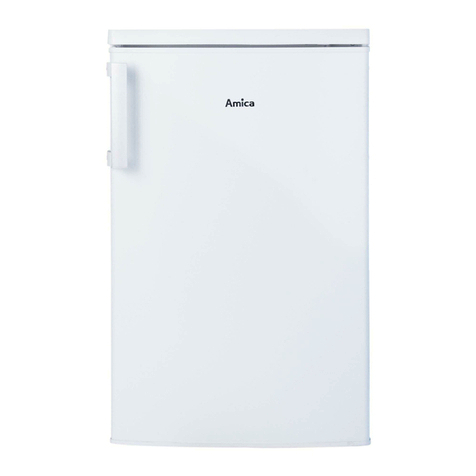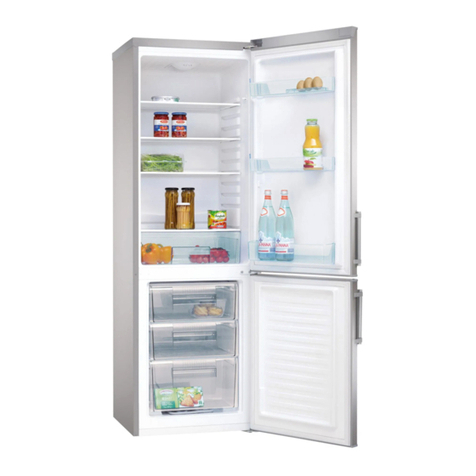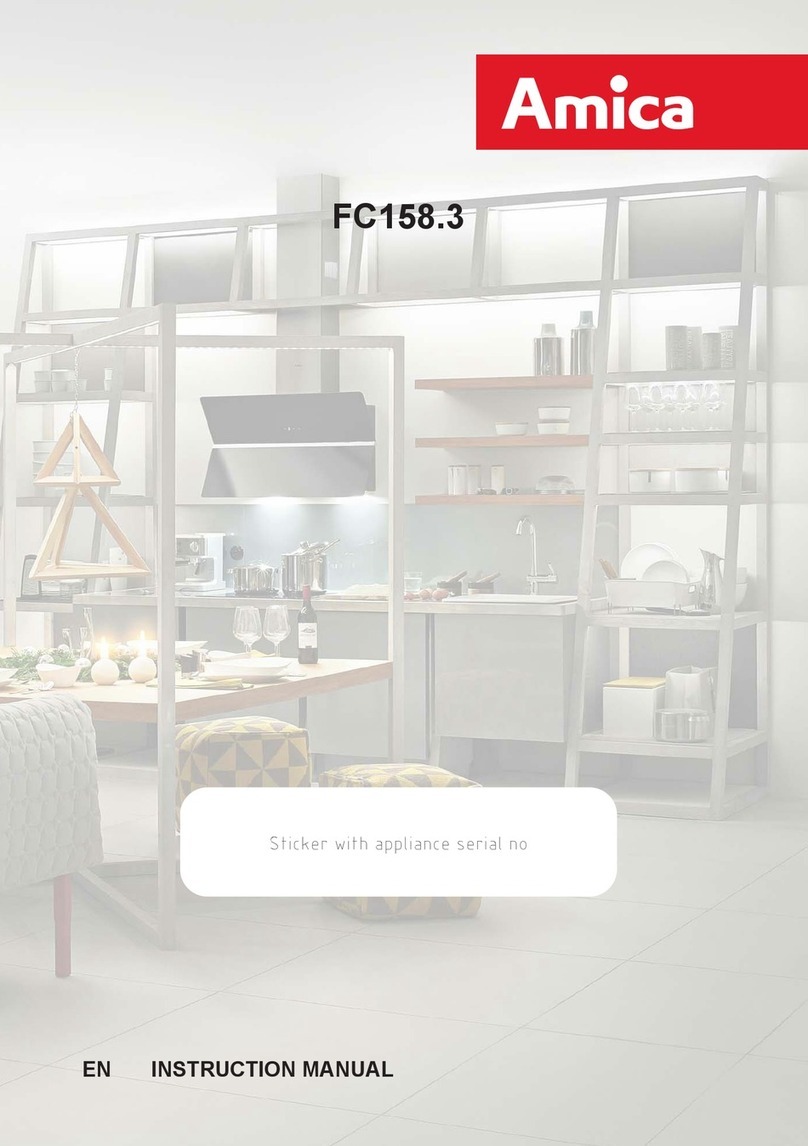
- 10 -
and unload refrigerating appliances.
• WARNING: When positioning the appliance, ensure
the supply cord is not trapped or damaged.
To avoid contamination of food, please respect the fol-
lowing instructions:
• Opening the door for long periods can cause a sig-
nicant increase of the temperature in the compart-
ments of the appliance.
• Clean regularly surfaces that can come in contact
with food and accessible drainage systems.
• Store raw meat and sh in suitable containers in the
refrigerator, so that it is not in contact with or drip
onto other food.
• Two-star frozen-food compartments are suitable for
storing pre-frozen food, storing or making ice-cream
and making ice cubes.
• One-, two- and three-star compartments are not
suitable for the freezing of fresh food
• WARNING: Do not use electrical appliances inside the
food storage compartments of the appliance, unles
they are of the type recommended by the manufac-
turer
Compartments
TYPE Target storage
temp.[OC] Appropriate food
1 Fridge +2≤+8 Eggs, cooked food, packaged food, fruits and
vegetables, dairy products, cakes, drinks and
other foods are not suitable for freezing.
2Freezer
≤-18
Seafood (sh, shrimp, shellsh), freshwater
aquatic products and meat products
(recommended for 3 months, the longer the
storage time, the worse the taste and nutrition),
suitable for frozen fresh food.
3Freezer
≤-18
Seafood (sh, shrimp, shellsh), freshwater
aquatic products and meat products
(recommended for 3 months, the longer the
storage time, the worse the taste and nutrition),
are not suitable for frozen fresh food.
4Freezer
≤-12
Seafood (sh, shrimp, shellsh), freshwater
aquatic products and meat products
(recommended for 2 months, the longer the
storage time, the worse the taste and nutrition),
are not suitable for frozen fresh food
5Freezer
≤-6
Seafood (sh, shrimp, shellsh), freshwater
aquatic products and meat products
(recommended for 1 months, the longer the
storage time, the worse the taste and nutrition),
are not suitable for frozen fresh food.

